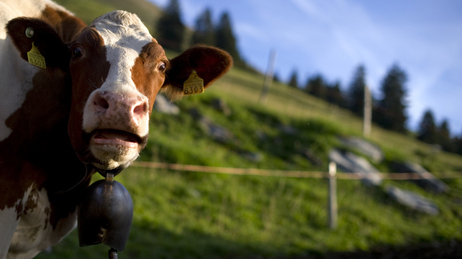
from NPR:
Imagine that one day you will go to your local supermarket and find, along the usual cuts of sirloin and pork chops from the usual cows and pigs, lab-grown sirloin and pork chops. Further down the counter, you will find chicken breasts, natural and lab-grown, and, across the hall, natural and lab-grown tilapia fillets. A yellow label is all you have to tell the difference between the two: natural vs. lab-grown meat. Which one would you choose? At least today, my bet is that the vast majority of people would choose the "natural" meats, as opposed to the lab-grown ones, even if scientists guarantee that there isn't any obvious difference between the two at the hormonal, nutritional, or molecular level.
Why is that?
I can hear echoes of what I call the Frankenstein Syndrome, the irrational fear of science going where it hasn't gone before. If we grow vegetables, why can't we grow meat?
If this sounds like something from a scifi movie, think again. Dozens of laboratories around the world are pursuing the elusive feat of producing lab-grown meat, as Michael Specter explored in his somewhat recent New Yorker article "Test-Tube Burgers."
from reuters:
(Reuters) - Scientists are cooking up new ways of satisfying the world's ever-growing hunger for meat.
"Cultured meat" -- burgers or sausages grown in laboratory Petri dishes rather than made from slaughtered livestock -- could be the answer that feeds the world, saves the environment and spares the lives of millions of animals, they say.
Granted, it may take a while to catch on. And it won't be cheap.
The first lab-grown hamburger will cost around 250,000 euros ($345,000) to produce, according to Mark Post, a vascular biologist at the University of Maastricht in the Netherlands, who hopes to unveil such a delicacy soon.
Experts say the meat's potential for saving animals' lives, land, water, energy and the planet itself could be enormous
read the rest here:
also see the related articles below:
http://inhabitat.com/lab-grown-345000-petri-dish-hamburger-is-coming-to-a-table-near-you/
http://inhabitat.com/likemeat-hopes-to-be-a-juicy-breakthrough-in-fake-meat/
Dutch scientist Mark Post displays samples of in-vitro meat, or cultured meat grown in a laboratory, at the University of Maastricht November 9, 2011.
REUTERS/Francois Lenoir
Samples of in-vitro meat, or cultured meat grown in a laboratory, are seen at the University of Maastricht November 9, 2011.
REUTERS/Francois Lenoir
REUTERS/Francois Lenoir
That is so gross!
ReplyDeletebut a dead cow killed in a slaughter house is delicious.
ReplyDeleteHow do the "posters" intend this to be linked to design? Just curious?
ReplyDeleteThe meat industry alone is said to be responsible for around 18% of the World’s greenhouse gas emissions.
ReplyDeleteThe livestock industry also consumes huge amounts of feed and water in relation to the amount of meat that it yields.
If this is no longer necessary it would be a game change for planners.
That meat isn’t going to design itself.
ReplyDelete